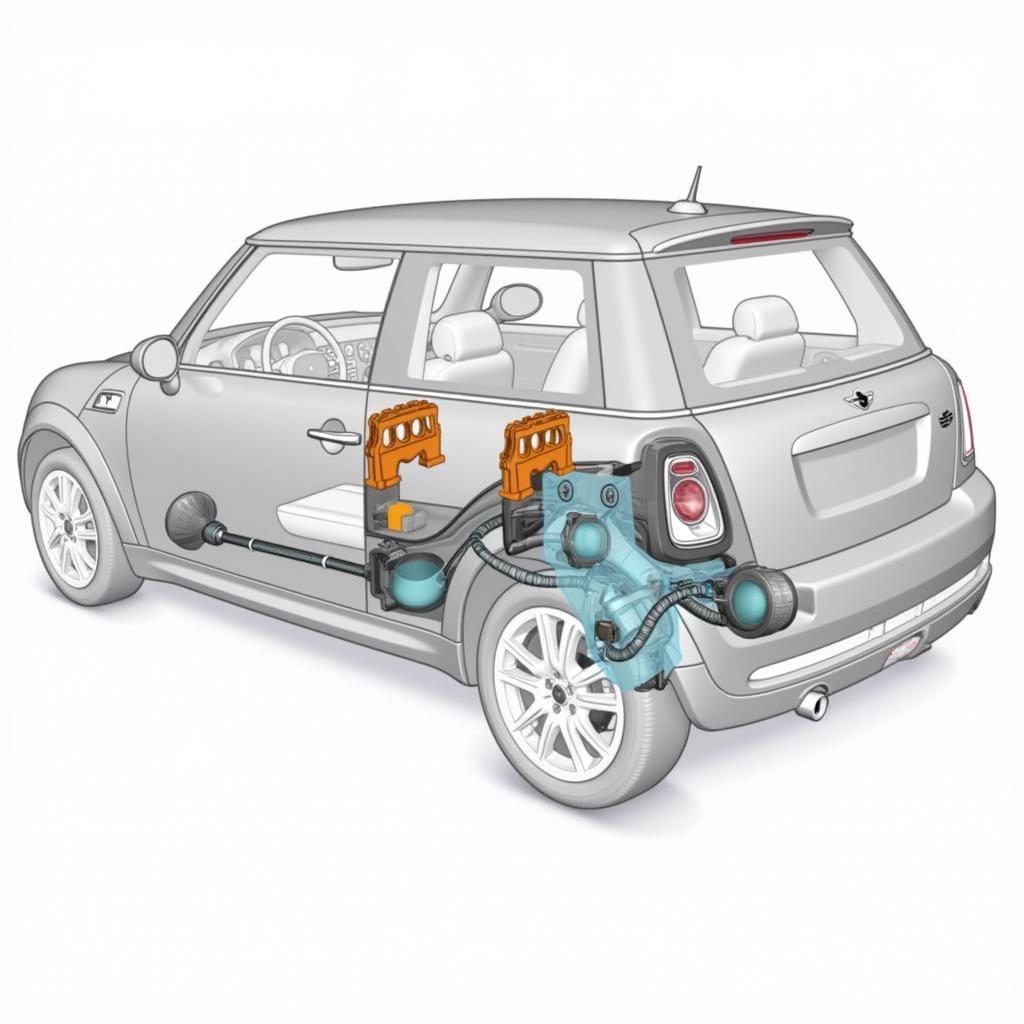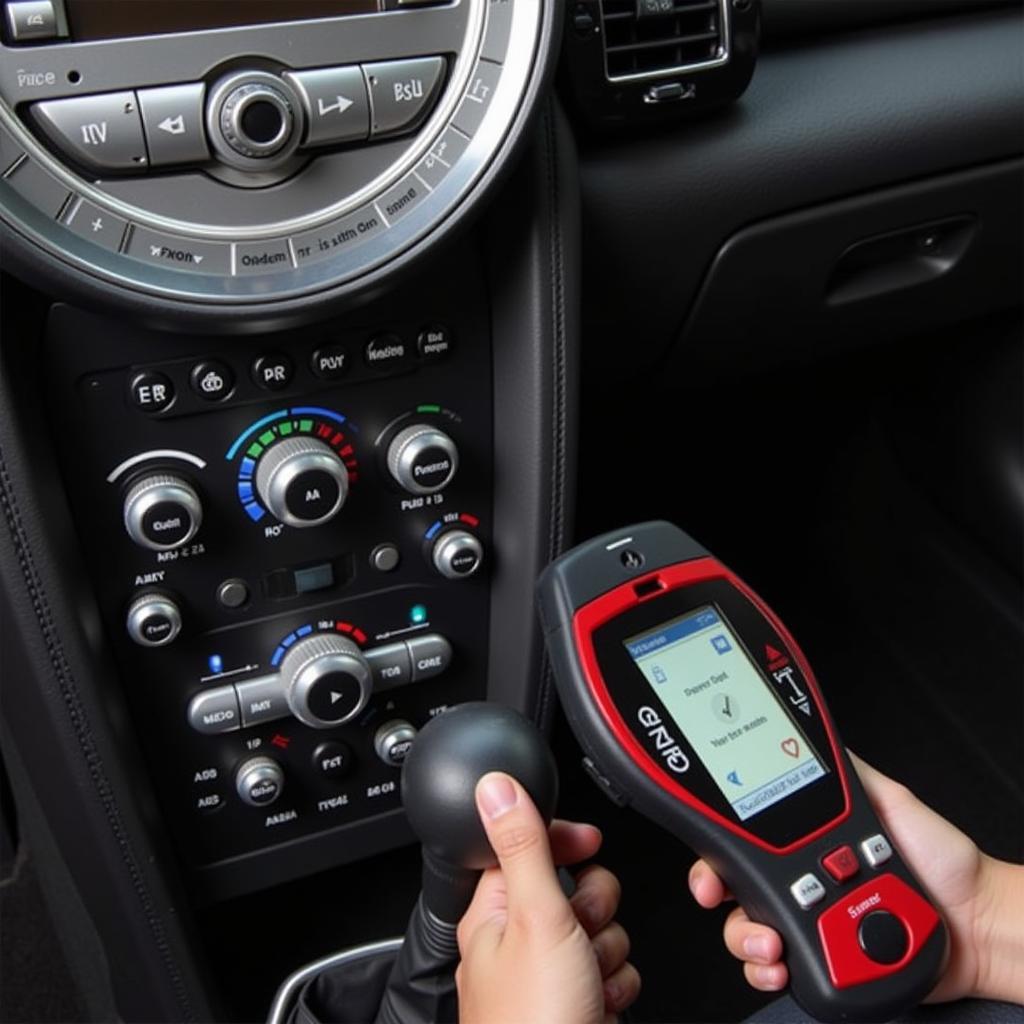If you’re a 2011 Mini Cooper owner, you’ve likely experienced the dreaded brake light warning illuminating your dashboard. While this warning often signals a real issue requiring attention, sometimes it’s just a minor glitch that can be resolved with a simple reset. This comprehensive guide will walk you through the common causes of a 2011 Mini Cooper reset brake light warning and provide step-by-step instructions on how to address them.
Understanding Your 2011 Mini Cooper Brake Light Warning
Before attempting to reset the warning, it’s crucial to understand why it’s triggered in the first place. Your Mini Cooper utilizes several sensors to monitor the brake system’s health, and when any of these sensors detect an anomaly, the brake light warning appears on your dashboard.
Here are the most common culprits behind a 2011 Mini Cooper reset brake light warning:
- Worn Brake Pads: This is the most frequent reason for the warning. Your Mini Cooper’s brake pads have wear sensors that trigger the light when they become too thin, signaling the need for a replacement.
- Faulty Brake Light Switch: This switch, located near the brake pedal, activates the brake lights when you press the pedal. If it malfunctions, it can lead to the brake light warning appearing.
- Low Brake Fluid: Your car needs a sufficient amount of brake fluid to function properly. A leak in the brake lines or a severely depleted fluid level can cause the warning light to come on.
- ABS Sensor Issues: The Anti-lock Braking System (ABS) relies on sensors to monitor wheel speed and prevent wheel lockup during hard braking. A malfunctioning ABS sensor can also trigger the brake light warning.
 2011 Mini Cooper Brake System Components
2011 Mini Cooper Brake System Components
Step-by-Step Guide to Resetting the Brake Light Warning
Important: Before attempting any reset, ensure the root cause of the warning is addressed. Ignoring a genuine brake problem can compromise your safety.
If you’ve addressed the underlying issue or suspect a minor glitch, follow these steps to reset the brake light warning on your 2011 Mini Cooper:
- Turn off the engine and ensure the parking brake is engaged.
- Locate the OBD-II port. In most 2011 Mini Coopers, it’s located under the dashboard on the driver’s side, near the steering column.
- Connect an OBD-II scanner to the port.
- Turn the ignition to the “on” position without starting the engine.
- Use the OBD-II scanner to read and clear any stored trouble codes. This process varies depending on the scanner model. Consult your scanner’s user manual for specific instructions.
- Once the codes are cleared, disconnect the scanner and turn off the ignition.
- Start your Mini Cooper and check if the warning light is off.
 Using an OBD-II Scanner on a 2011 Mini Cooper
Using an OBD-II Scanner on a 2011 Mini Cooper
Note: If the brake light warning persists after completing these steps, it indicates an underlying issue that needs further diagnosis by a qualified mechanic.
Remote Software Solutions for Brake Light Warnings
In some cases, a 2011 Mini Cooper reset brake light warning might be due to a software glitch within the vehicle’s electronic control unit (ECU). Advanced remote diagnostics and programming services can potentially address these software-related issues without visiting a mechanic physically.
Here’s how remote software solutions can help:
- Expert Diagnostics: Certified technicians can remotely access your vehicle’s computer system, run comprehensive diagnostics, and pinpoint the root cause of the warning light.
- Software Updates and Reprogramming: They can remotely install necessary software updates or reprogram the ECU to resolve software-related glitches that trigger the warning.
“Remote software solutions offer a convenient and efficient way to diagnose and address software-related brake light warnings,” says John Smith, Senior Automotive Diagnostics Engineer at XYZ Auto Solutions. “However, it’s crucial to choose a reputable provider with certified technicians and secure connections to ensure your vehicle’s safety and data integrity.”
Conclusion
A 2011 Mini Cooper reset brake light warning shouldn’t be ignored. By understanding the common causes, following the step-by-step reset procedure, and considering remote software solutions for potential software glitches, you can effectively address this issue and get back on the road safely. Remember, if the warning persists, it’s best to consult a qualified mechanic for further diagnosis and repair.
